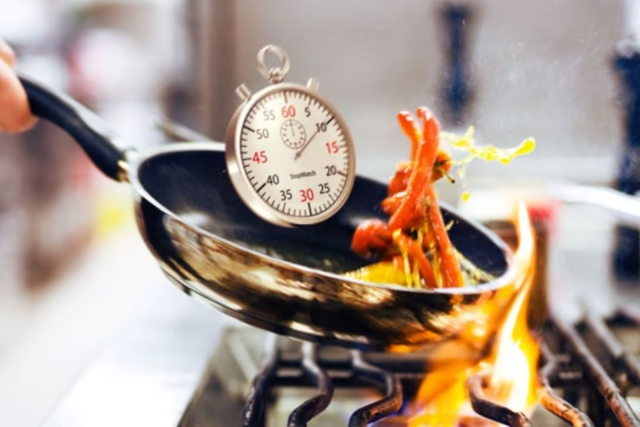Introduction
To keep hot foods hot and cold foods cold, you need to know how to do it, have the right tools, and have workers that are disciplined. Managing the food temperature is a continual procedure that starts when the ingredients are brought to the kitchen and ends when the dish is presented to the diner. In this article, we’ll go into great detail about the best techniques to keep right food temperature in restaurants and make sure that every dish is safe and of the finest quality.
Proper Storage from the Start
Storage is the first stage in food temperature management. As they arrive, place fresh produce, meat, dairy, and seafood at the right temperature. Refrigerators and freezers must be regularly checked and maintained for business use. Refrigerators should keep below 40°F (4°C) and freezers below 0°F (-18°C). If you won’t serve hot foods straight away, keep them in a hot holding cabinet above 140°F (60°C). Avoid overstocking cold storage units to avoid airflow restrictions and uneven cooling. Using the first-in, first-out (FIFO) labelling and stock rotation method keeps food fresh and safe.
Using the Right Equipment for Hot Holding
Restaurants use a lot of different tools to keep food hot, such steam tables, heat lamps, and hot holding cabinets. These instruments are used to maintain prepared food at safe temperatures until it is served, without overcooking or drying it out. Buffet-style service works well with steam tables, and heat lamps are great for keeping plated meals warm in the pass before waiters carry them to diners. Hot holding cabinets are great for keeping the temperature of big quantities without losing quality. The most important thing is to warm these units before putting food in them and to check the interior food temperature often with calibrated thermometers. Keeping lids closed and only opening doors when required helps keep heat from escaping.
Maintaining Cold Foods for Safety and Quality
You need to pay just as much attention to cold foods as you do to heated dishes. You need to keep salads, shellfish, dairy-based sweets, and cold drinks cool all the time. Refrigerated display units, cold wells, and ice baths are all good ways to keep the kitchen prep spaces and service stations cool. When serving food at a buffet or catering event, cold food should be put on beds of ice that are deep enough to surround the container up to the food level. To make sure safety, temperature checks should be done on a frequent basis, just like they do with hot meals. One of the most common errors that may quickly put food in the danger zone is leaving cold things out at room temperature for a long time.
Temperature Monitoring and Record Keeping
Regular monitoring and good record keeping are part of a proactive temperature control system. Kitchen personnel should know how to check and record the temperatures of food at certain times of the day. Digital probe thermometers, infrared thermometers, and built-in equipment gauges are all necessary instruments for this job. There are two reasons to record temperature data. First, it gives workers rapid feedback so they can fix problems right away. Second, it leaves a paper trail that shows that you are following food safety rules, which is important during inspections. Documented records can also assist find the root of a problem and stop it from happening again.
Safe Reheating and Cooling Procedures
Sometimes you must heat or cool food before storing. To destroy microorganisms, immediately heat the food to 165°F (74°C). Hot holding cabinets can’t heat food from cold, therefore ovens, stovetops, and commercial microwaves are superior. To prevent germs, cool quickly. People use ice baths, blast chillers, or smaller containers to achieve this. Cool heated food to 70°F (21°C) in two hours and to 40°F (4°C) or below in four hours.
Creating a Culture of Food Safety
Keeping appropriate food temperature requires technology and culture. Restaurants that prioritise food safety create an environment where staff members know how to keep visitors safe. This includes encouraging individuals to discuss issues, applauding vigilant temperature checkers, and enforcing optimal practices. Management should set an example by obeying the standards and making it clear that temperature regulation should never be compromised. Food safety safeguards visitors and the restaurant’s reputation. Also Visit:
Exploring the Top Heated Displays for Famous Hot Meals
Conclusion
Maintaining proper food temperature in a restaurant requires knowledge, equipment, and discipline. From ingredient delivery to food service, safe temperature limitations must be observed. Meals must be handled carefully when changing temperatures. Restaurants can keep customers safe and happy by buying reliable equipment, training staff, monitoring temperatures, and encouraging safety. Temperature management is essential in a firm that values trust and reputation.







